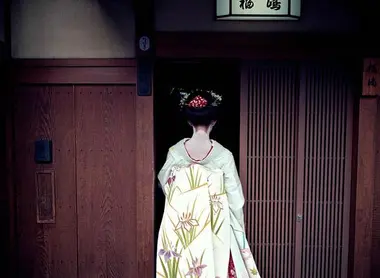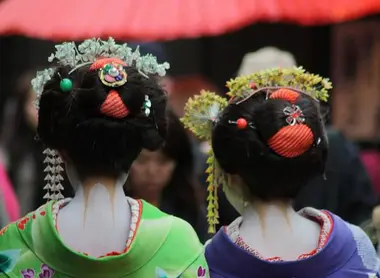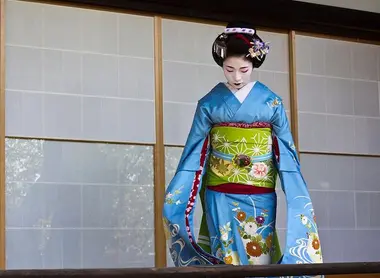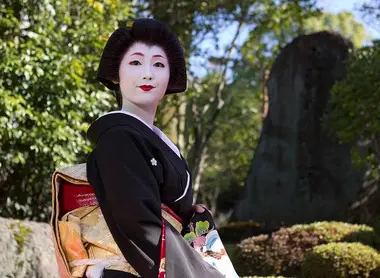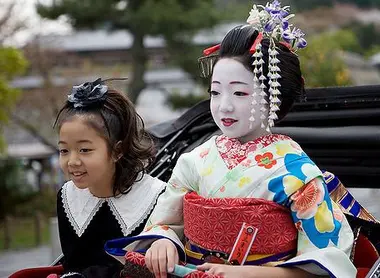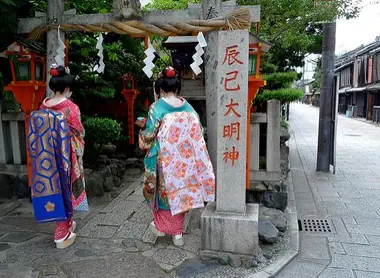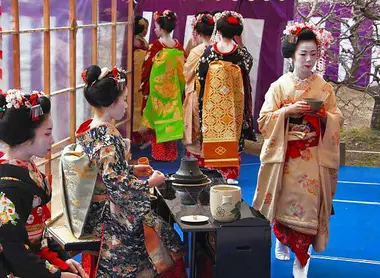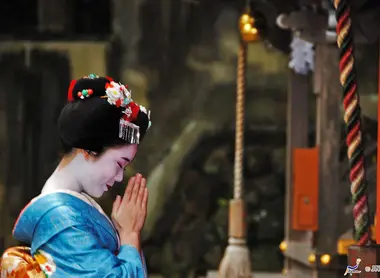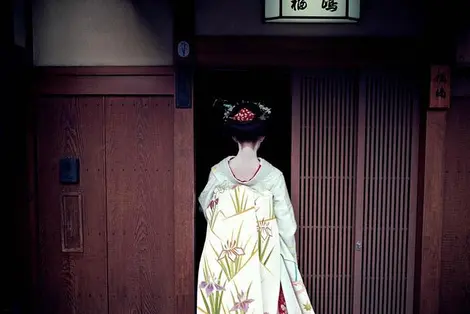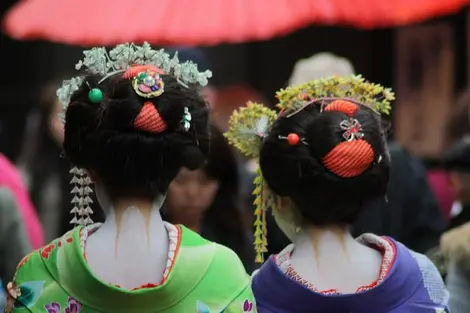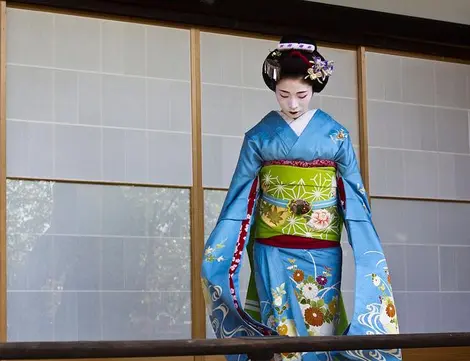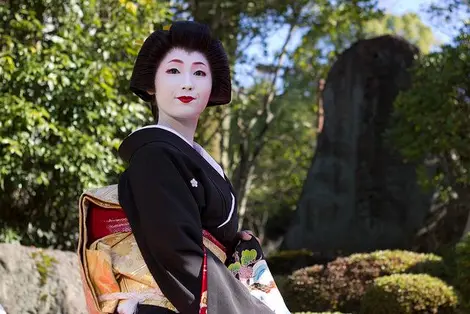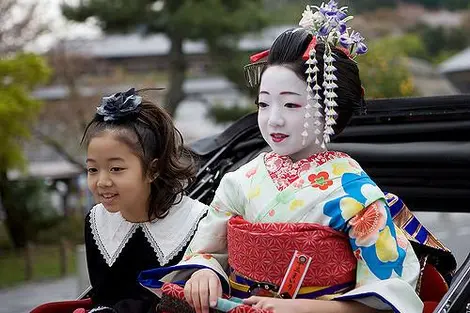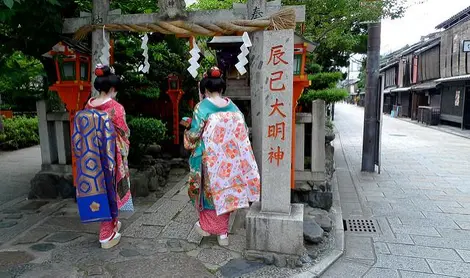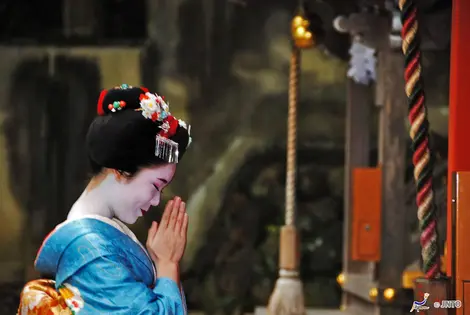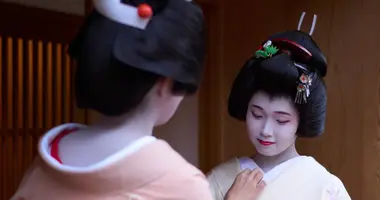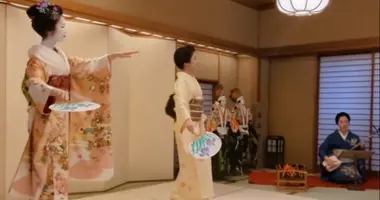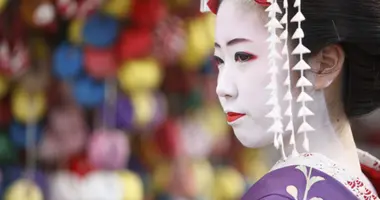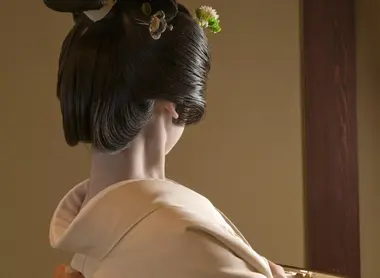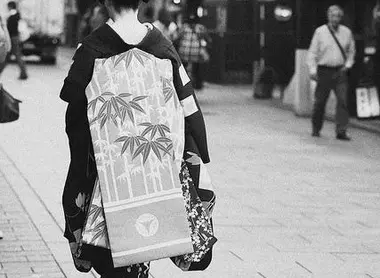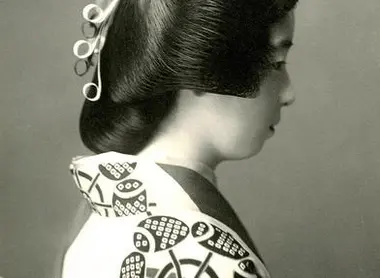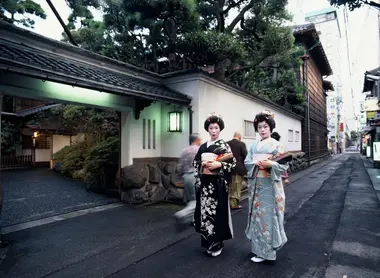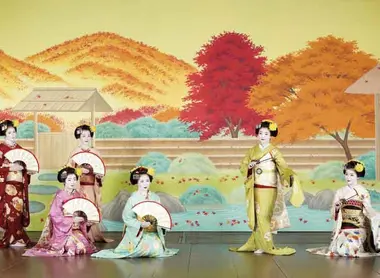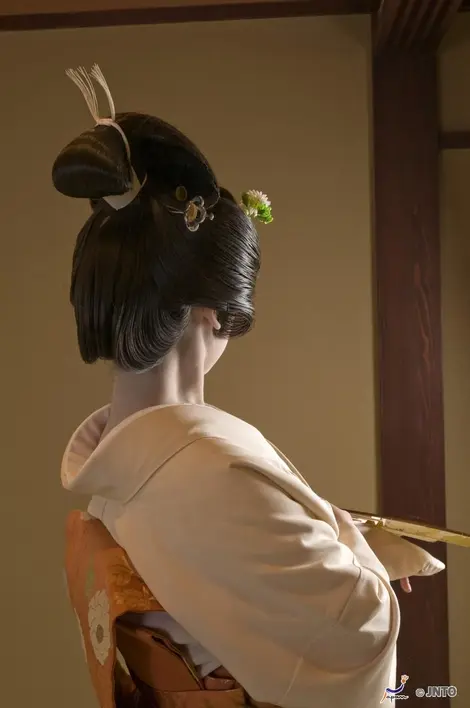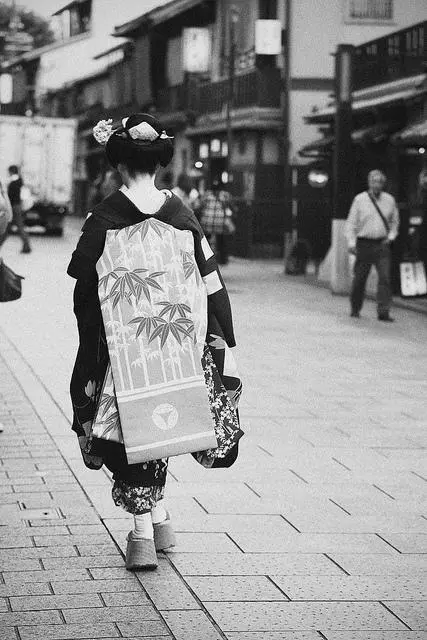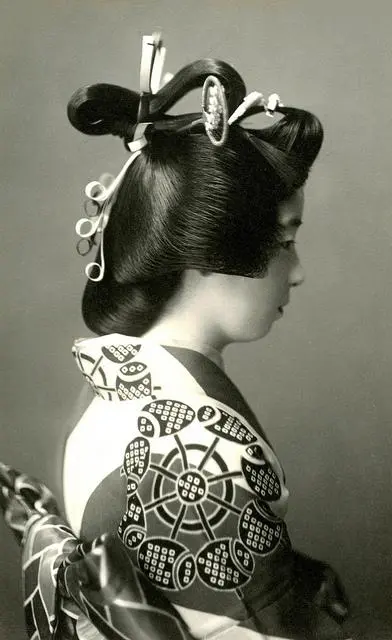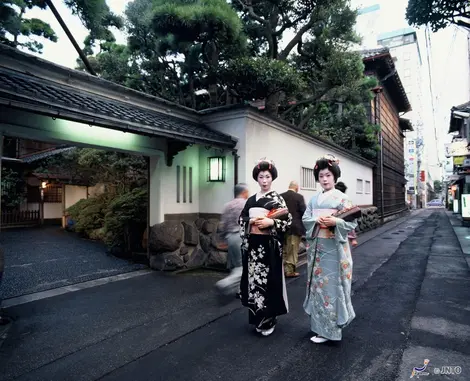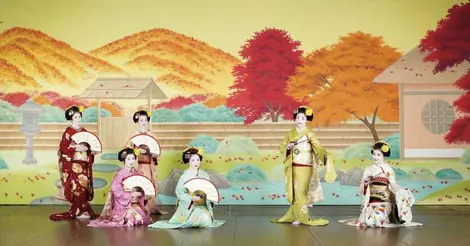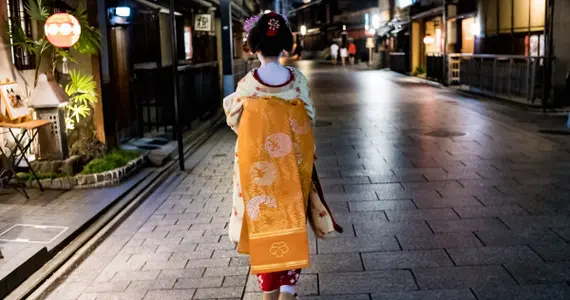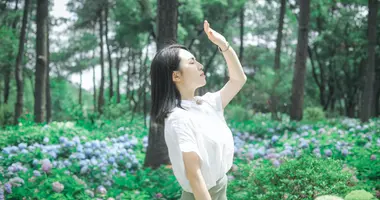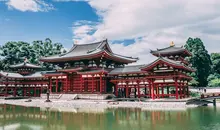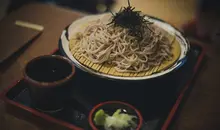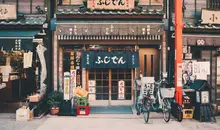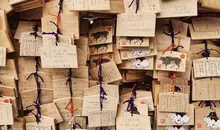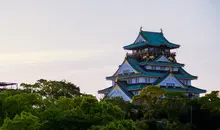Geishas: guardians of the Japanese arts
- Published on : 29/04/2020
- by : Phoebe
- Youtube
Women of art and traditions
Geishas, emblematic figures of traditional Japanese culture, embody the very essence of Japanese art and refinement. Literally "people of the arts", they devote their lives to the practice of traditional Japanese arts to entertain a wealthy clientele. Often misunderstood in the West as prostitutes, geishas are in fact accomplished artists and guardians of a unique cultural heritage. Their presence in Japanese society represents a living bridge between tradition and modernity. Their numbers have declined considerably over time, from several thousand in the 18th century to fewer than 200 today, mainly due to the difficulty of the apprenticeship and the personal sacrifices required.
The historical origins of the geisha profession
The term "geisha" was officially recognized as a profession in its own right in the second half of the 18th century. The history of geisha began with the opening of teahouses (ochaya) in the pleasure districts at the beginning of the 18th century. Contrary to popular belief, the first geishas were men, called taikomochi or hôkan, whose job was to entertain customers with song and music.
In the 1750s, women began to enter the profession as "onna geisha" (female geisha) or "geiko" in Kyoto. They soon outnumbered their male counterparts, who took the name "otoko geisha" (male geisha) to differentiate themselves. By 1800, the profession had become exclusively female.
In 1779, the Japanese government formalized the geisha profession and created a registry office (kenban) to register them and enforce the law prohibiting sexual relations between geishas and their clients. The Tenpō reform, in the mid-19th century, outlawed prostitution and temporarily closed the pleasure districts. When they reopened, the government set an official rate for geisha services.
Until the beginning of the 20th century, geishas were considered fashion benchmarks. With the Westernization of Japan in the 1920s-1930s, some geishas adopted Western styles, but many opposed this modernization and positioned themselves as guardians of Japanese traditions, a role they retain today.
Rigorous training: learning the traditional Japanese arts
Becoming a geisha requires years of intensive training. In the past, young girls were sold by their poor families to okiya (geisha houses) from the age of 6. Today, training doesn't begin until the age of 15, and girls must enter this career of their own free will, usually after completing their compulsory schooling.
Training often begins with a period called "minarai" (apprenticeship by observation), during which girls follow and observe experienced geisha. They learn the basics of various traditional arts: chanoyu (tea ceremony), Japanese poetry and literature, ikebana (flower arrangement), music (shamisen, traditional drums, Japanese flute), kimono wearing and the art of conversation.
Apprentices, called "maiko" in Kyoto, complete their training by accompanying confirmed geisha on their appointments. This creates a "sisterly" relationship: the older geisha passes on her knowledge to the younger and gradually introduces her to the closed circle of geisha. The maiko must make a name for herself and build up her own clientele.
Accession to geisha status is marked by the "erikae" (collar change) ceremony, when the apprentice's red collar is abandoned in favor of the white collar, reserved for confirmed geisha. This demanding training enables geishas to master traditional Japanese dances and music, and to acquire a general knowledge enabling them to converse on all subjects with their wealthy clientele.
Geisha aesthetic codes: make-up, hairstyle and dress
The world of geisha is governed by extremely precise aesthetic codes that affect every aspect of their appearance. Maiko make-up is particularly recognizable: the face is covered with a thick layer of white rice powder, the mouth is tinted bright red, and the eyes and eyebrows are redrawn with black. The more experienced geisha (geiko) become, the less make-up they wear. Over the age of 30, they can reserve make-up for special occasions, giving way to their natural beauty.
Geishas wear silk kimonos exclusively for outings, fastened with a wide belt (obi) tied at the back. The shape of the bow reveals the age and status of the geisha: a bow with a train (darari obi) is worn by maiko, while a short bow (taiko musubi) is the prerogative of older, more established geisha. Similarly, bright colors and patterns are generally reserved for younger geisha.
Dressing a kimono is a complex task, due to the weight and complexity of the fabrics. A professional dresser often assists geishas in this task - indeed, he's the only man allowed inside the okiya. Kimonos, traditionally handmade, represent a considerable investment, costing several thousand euros.
Geisha hairstyles are sophisticated, traditional buns, held together with combs and hairpins (kanzashi). To preserve their hairstyles, which must remain intact for several days, geishas sleep using a neck rest (takamakura) to prevent their heads from touching the floor. Today, some geishas wear wigs to avoid baldness caused by the tension exerted on their hair.
Want to discover the art of geishas? Our activities across Japan will immerse you in their captivating world
The social and artistic role of geisha in Japanese society
Geishas occupy a unique place in Japanese society as guardians of culture and tradition. They embody the height of Japanese refinement and are deeply respected for their role in preserving traditional arts. Contrary to the image often conveyed in the West, geishas are not prostitutes but accomplished artists whose main function is to entertain through their artistic talents.
The geisha's main job is to take part in banquets (zashiki) held in tea houses (ochaya) or traditional restaurants. At these events, they use their artistic skills to entertain a wealthy clientele made up mainly of businessmen, politicians and wealthy individuals. They excel in the art of conversation and possess a broad general knowledge that enables them to interact with ease in these elitist circles.
Traditionally, not all wealthy clients could request the services of geisha at will. They had to be recommended or introduced by existing customers. This is still largely the case today, although some geishas now offer cultural experiences aimed at tourists, notably through the tea ceremony or public performances such as Traditional arts at Gion corner.
Geisha services are charged according to the time spent in their company. Customers also pay for meals and drinks consumed during the encounter. A particularity of this system is that the bill, often large, was traditionally sent some time after the meeting, reflecting the relationship of trust established with the clientele.
Daily life in an okiya: hierarchy and organization
Geishas live in reserved districts called hanamachi (花街, "flower cities"), the most famous of which are in Kyoto, such as Gion and Pontochô. They are attached to a geisha house, the okiya, although not all live there. These houses are run by a woman called "okasan" (mother), who manages the establishment and watches over her "daughters".
The structure of an okiya is similar to that of a family, where the older geisha are considered "big sisters" to the younger ones. The okiya takes charge of the apprentices' training, providing them with accommodation, kimonos and the necessary equipment, in exchange for which it collects a portion of their income until their expenses are reimbursed.
Once their debt is paid, geishas can choose between two lifestyles: continuing to live with the okiya, which provides housing and kimonos but takes a cut of their earnings, or becoming "independent" (jimae). In the latter case, they have to finance their own clothing and equipment, but retain almost all their income. Nevertheless, they remain attached to their okiya, which acts as their agency and receives a commission.
Relationships between geishas often form true "lineages". Each apprentice must find a "big sister" (oneesan) who teaches her the trade and introduces her to the business. This relationship is formalized in a ceremony called "san san ku do", where they take three sips from three bowls of sake, symbolizing the creation of a bond. On this occasion, the apprentice chooses her geisha name, often inspired by that of her oneesan.
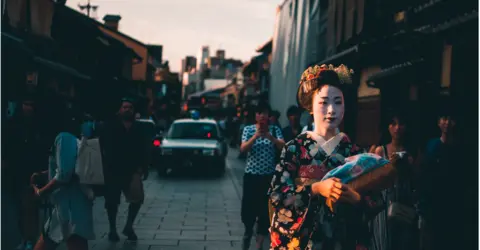
Geisha in Kyoto
Geisha in the 21st century: between tradition and modernity
In the 21st century, the geisha profession has evolved considerably, while preserving its age-old traditions. Today, becoming a geisha is a voluntary choice, usually made in adolescence, around the age of 17 or 18, whereas in the past, young girls entered geisha houses as children. The apprenticeship, though still long and difficult, has adapted to contemporary realities.
The number of geisha has fallen drastically, from several thousand in the Edo period to fewer than 200 today. This decline can be explained by the emancipation of women in modern Japanese society, who now have access to other professional opportunities offering independence and financial stability. Paradoxically, in recent years there has been a resurgence of interest in this profession, thanks in particular to better communication via traditional and digital media.
Today's geisha must reconcile respect for tradition with adaptation to the modern world. Some maintain a presence on social networks, take part in international cultural events or offer experiences accessible to tourists, such as Geisha Evenings in Kanazawa. These initiatives contribute to the preservation and dissemination of their art while ensuring the economic viability of their profession.
Despite these evolutions, the essence of the geisha profession remains unchanged: they remain artists dedicated to the mastery and transmission of traditional Japanese arts. Their role as cultural guardians is more important than ever in a constantly modernizing Japan, where they embody a living link with the country's artistic heritage.
Where to meet geishas in Japan: famous hanamachi
If you'd like to spot or meet geishas on your trip to Japan, certain historic districts offer the best chances. These districts, known as hanamachi ("flower cities"), are where geisha live, train and practice their art.
Kyoto remains the historic cradle of geisha, and the city where you're most likely to come across one. The Gion district, particularly Hanamikoji-dori and Shirakawa-minami-dori, is the most famous. If you take an early evening stroll, you may catch a glimpse of geishas or maiko on their way to appointments. An organized night stroll in Gion may increase your chances of observing them in their natural environment.
Other Kyoto districts are also home to geisha communities: Pontochô, with its narrow alley running alongside the Kamogawa River; Miyagawachô, located near Kennin-ji temple; Kamishichiken, the oldest and smallest of Kyoto's hanamachi; and Shimabara, a historic district less frequented by tourists.
In Tokyo, although fewer in number than in Kyoto, geishas can be found in several traditional districts: Asakusa, with its old Tokyo atmosphere; Kagurazaka, formerly an important hanamachi; and Shinbashi, where a few active geisha houses can still be found.
For a more immersive experience than mere observation, you can attend public performances by geisha. In Kyoto, the Gion Corner theater offers daily performances of traditional arts, including maiko dances. During spring, dance festivals such as Miyako Odori (Capital Dance) and Kamogawa Odori (Kamo River Dance) offer the opportunity to see geisha perform on stage.
For an even more authentic experience, some ryokan (traditional inns) and high-end restaurants can organize dinners in the company of geishas, although these services are expensive and often reserved for regular or recommended clientele. Discover all the Activities in Kyoto to enrich your stay in this city steeped in history and tradition.
